Audio Guide
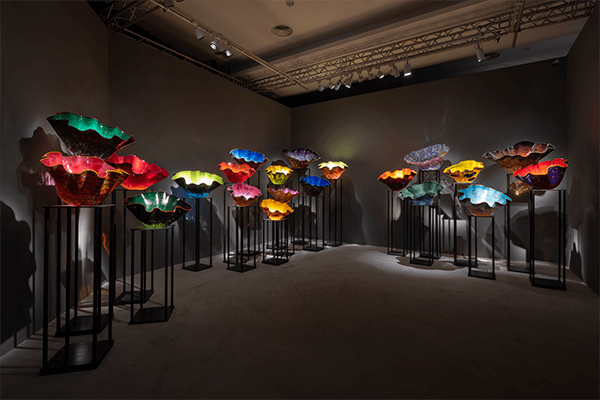
Motivated by a desire to use as many colour combinations in one series as possible, Chihuly created Macchia (Italian for “spotted”) in 1981. The development of the series involved creating a technique for applying a layer of white between colours to prevent them from blending. Pieces of coloured glass are fused onto the surface of the Macchia during the glassblowing process to produce the mottled effect for which this series is named. Experience Chihuly’s Macchia Forest at Bayfront Pavilion, an immersive environment featuring the boldly colourful Macchia.
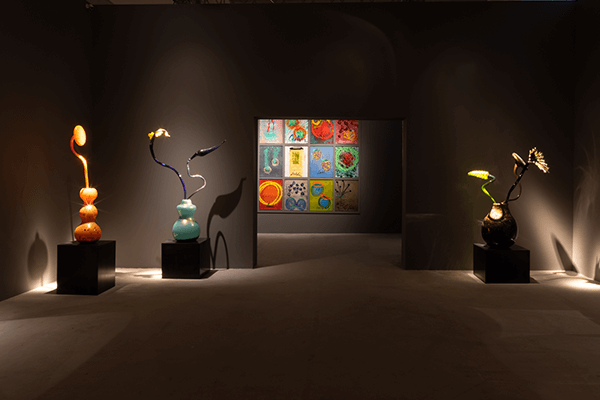
Ikebana began in 1989 as an offshoot of the Venetians and was inspired by “ikebana,” the art of Japanese flower arrangement. The series, like others initiated by Chihuly during this period, demonstrates the artist’s aspiration to move glass from the pedestal into the realm of large-scale sculpture. His approach to Ikebana focuses on assemblage, a concept used in earlier series.

Drawing Walls consist of several individual Drawings presented side-by-side in large open girds to create a single composition. What began for Chihuly as a means of expressing his ideas to the glassblowing team, evolved into a unique body of work that references the development of his glass series. Drawings vary from light and airy to bold and colourful. Chihuly works with acrylic, watercolour, charcoal, graphite - even fire - to create his expressive two-dimensional artworks.
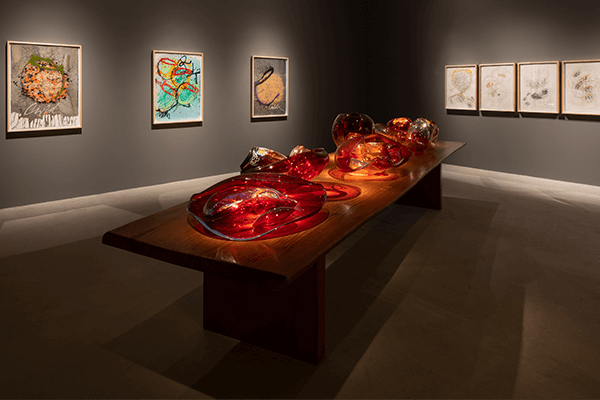
Chihuly began the Basket series in 1977. Experimenting with the use of fire, gravity, and centrifugal force, he found new ways to create asymmetrical vessels with thin, undulating walls. Originally Baskets were created in subdued earth-tones; the artist has revisited the series throughout his career experimenting with increased scale and exuberant colours, as evidenced in Garnet Flame Baskets created in 2019. At the Bayfront Pavilion, his Garnet Flame Baskets demonstrate the unique forms, palette and nesting quality of this work.

Chihuly has always had an interest in architectural settings and how art interacts in spaces. In 1992, during his solo exhibition at the Seattle Art Museum, inspiration and circumstance merged. Challenged by one installation in a room that didn’t feel resolved, he created a new type of installation before the opening, and presented his first Chandelier. Chihuly’s Chandeliers are assembled with multiple hand-blown glass forms mounted to a steel armature. Over the years, he has explored both multicoloured compositions and variations on a single colour. Unlike traditional chandeliers, they reflect light instead of emitting it. His Chandeliers are often hung in unusual spaces and places, within the exhibition they can be found at the World of Plants, Cloud Forest, Bayfront Pavilion, and at the SG50 Lattice.
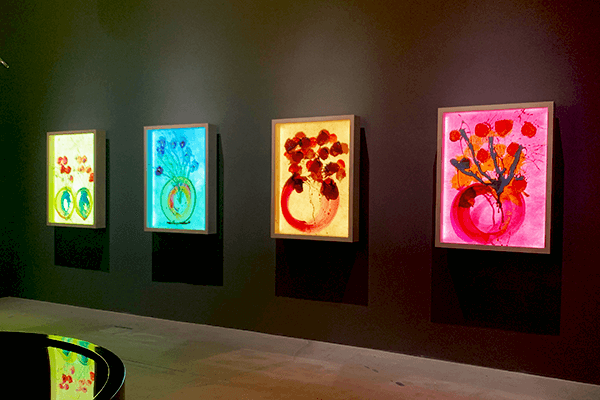
Debuted in 2017, Glass on Glass demonstrates Chihuly’s ongoing exploration of the transmission of light through transparent media. Comprised of glass panels that are painted with vitreous-glass enamel, then layered within a special frame to create a single unified vision, the depth of each Glass on Glass composition is revealed as the viewer changes position. Painting with vitreous enamels is an age-old art form going back a thousand years. Some of the first examples of painting on glass can be seen in objects from the Roman Empire. Chihuly explores modern themes using this traditional technique.
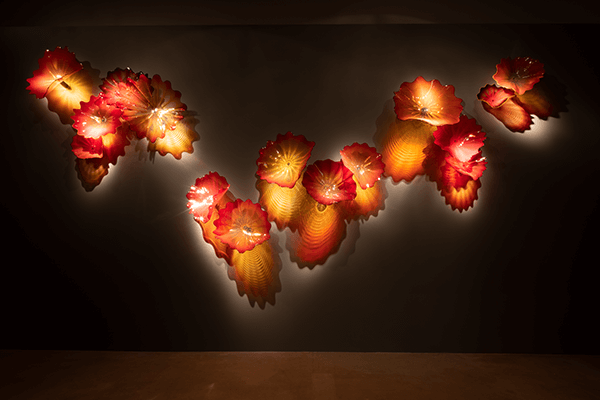
Brilliant works from Chihuly’s Persian series can be found in the Gallery with the rich red and yellow hued Persian Wall. Chihuly began the Persian series in 1986, while experimenting with new forms. Originally, he displayed Persians in pedestal compositions, often with smaller shapes nested within larger pieces. Later, working with an architectural framework, he mounts larger forms to walls and suspends them as overhead compositions. He also assembles them in the form of Chandeliers and Towers.

